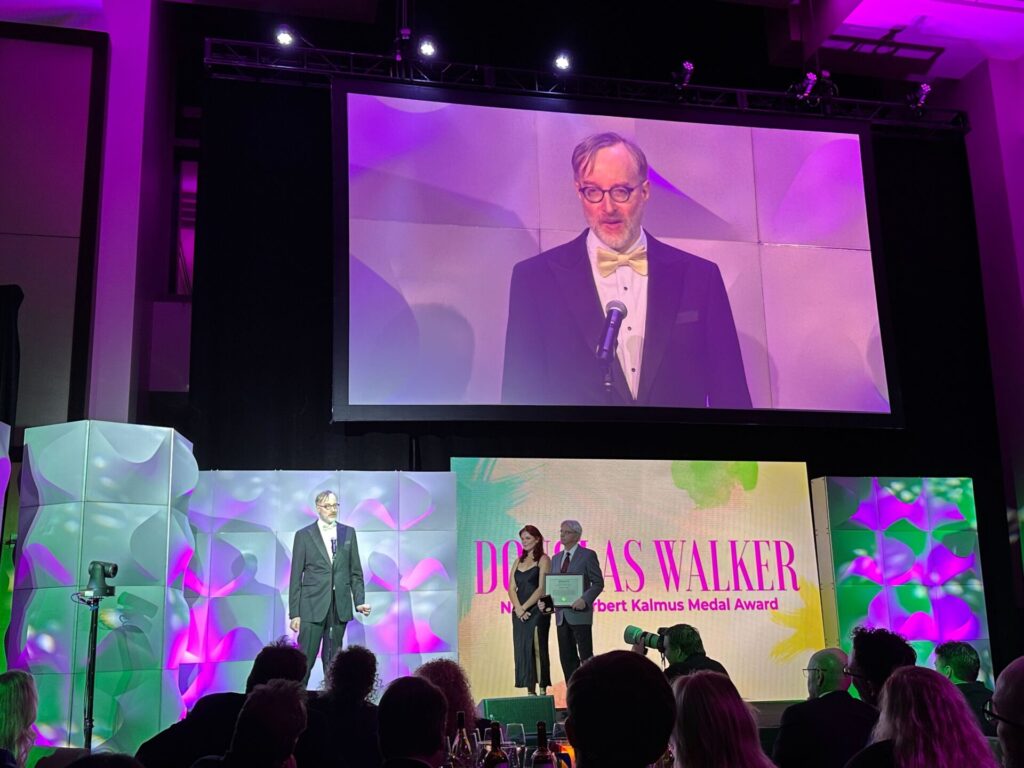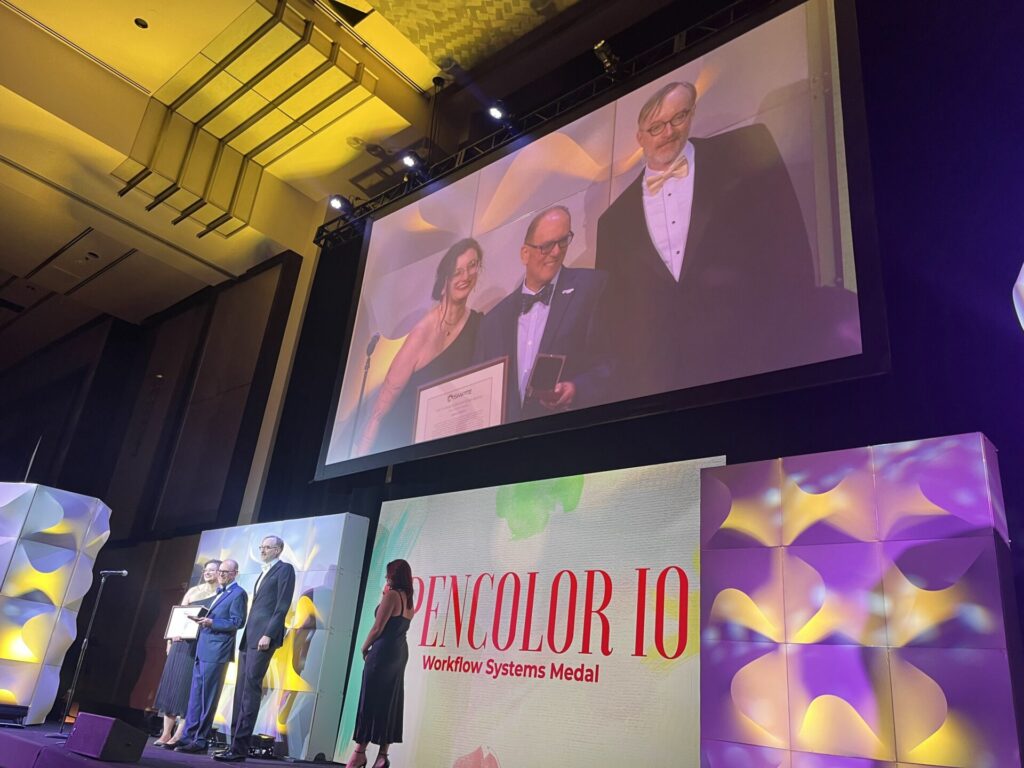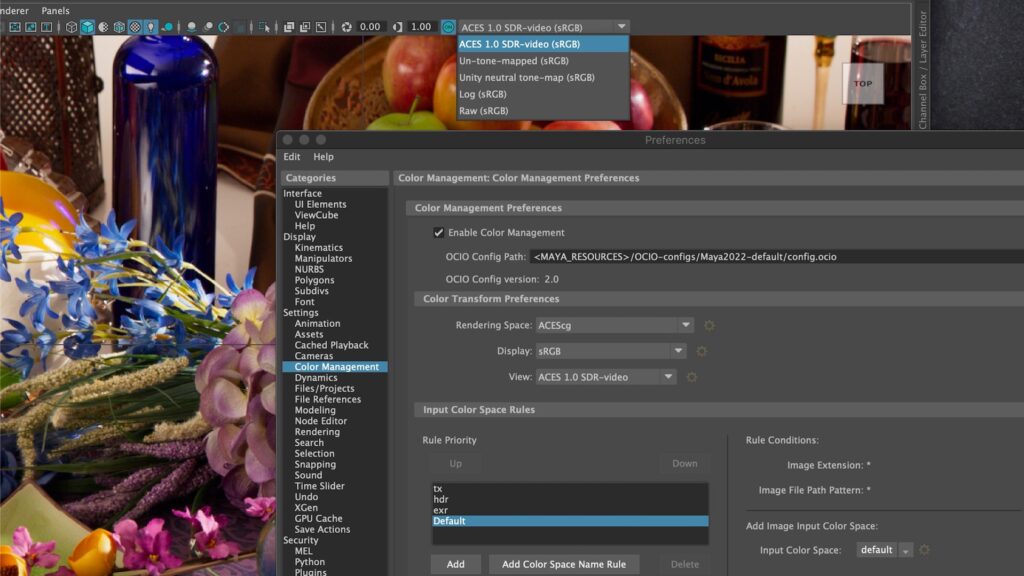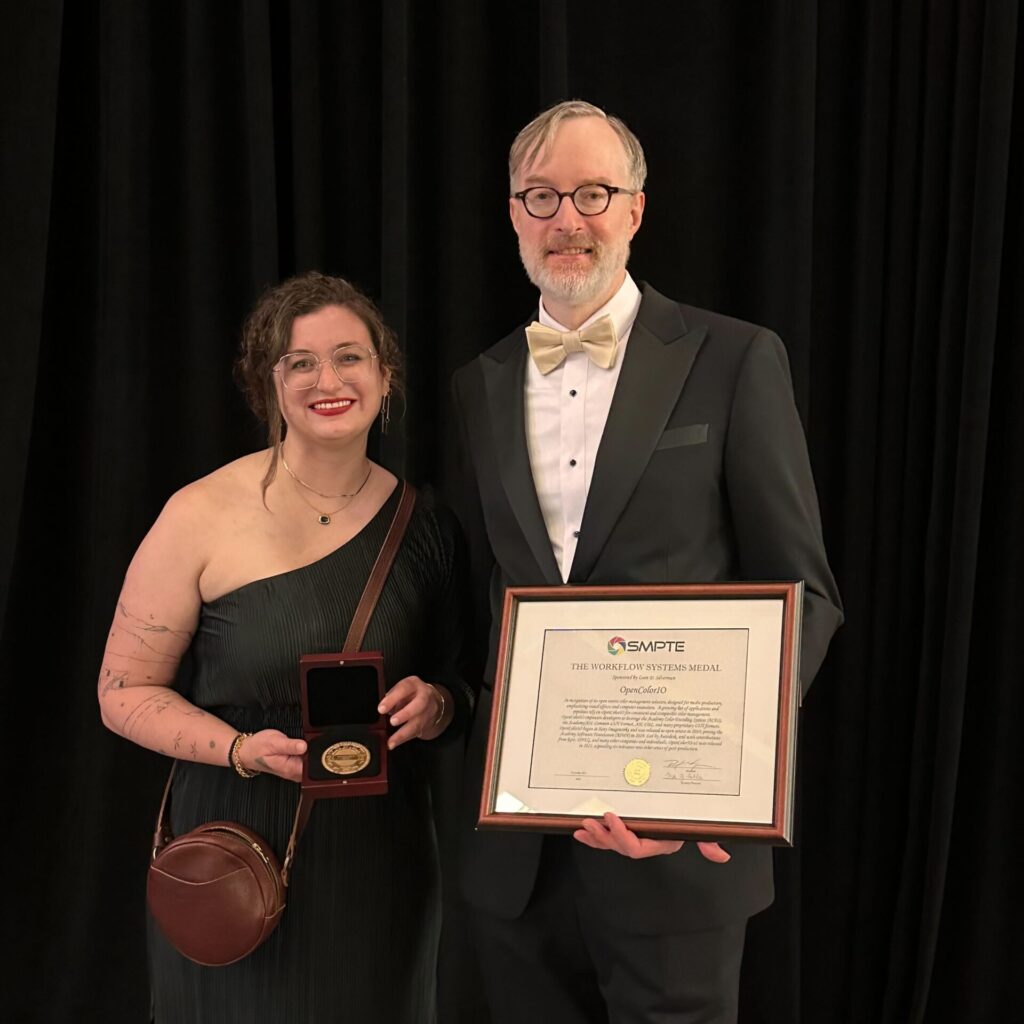
The Society of Motion Picture and Television Engineers (SMPTE) honored Autodesk’s Doug Walker with the prestigious Natalie M. and Herbert T. Kalmus Medal; Walker was also a co-recipient of the Workflow Systems Medal for OpenColorIO at the 2023 SMPTE Awards Gala.
Doug is the Technology Lead for Color Science in the Autodesk Entertainment & Media Solutions group and has been with the company for over 16 years. He works on color-related features for products such as Flame and Maya and is also very active on open source projects, serving as the Chief Architect on the OpenColorIO Technical Steering Committee and as part of the Architectural Technical Advisory Council for the Academy of Motion Picture Arts & Sciences’ ACES project.
We caught up with Doug to learn more about the remarkable career achievements that led to these recent SMPTE honors.
Q: The Natalie M. and Herbert T. Kalmus Medal dates back to 1956, is only awarded to one recipient a year “recognizing outstanding contributions that reflect a commitment to the highest standards of quality and innovation in motion picture post-production and distribution services,” and is one of SMPTE’s highest honors. Congratulations on being this year’s recipient! Why is winning this award meaningful?
A: It’s meaningful to me because of the people who have won it in the past. Prior winners are an amazing collection of engineers who have had a profound impact on how motion pictures are created and delivered. Many of these people have been mentors, colleagues, and friends over the years, so to be included in this group is a huge honor.
Some of the previous winners are true industry legends, people like Ub Iwerks, who animated the first Mickey Mouse cartoon, and later helped Disney develop a lot of their visual effects techniques. Other winners – people from Josh Pines and Bill Feightner, who were responsible for developing the digital intermediate process for how movies are color corrected, to Rod Bogart who developed the OpenEXR format, to Harald Brendel who is responsible for the color in the ARRI digital cinema cameras – have had a huge impact on the industry and I’m humbled to stand alongside them with this award.
Q: You were selected for this award for “contributions to color management in the motion picture industry, including as chief architect of the OpenColorIOv2 open-source project…and work on the implementation of the Common LUT Format (CLF)…and as technology lead for color science at Autodesk…” What led you down this career path into color science?
A: My parents both worked for the Eastman Kodak company, and they first met in the lab of Ralph Evans, a legendary Kodak color researcher who was the Kalmus Medal recipient in 1961. I grew up in a household where photography was always present, and studied engineering and image processing in college. I always wanted to work in a field that was at the intersection of art and technology. Digital photography and digital cinematography seemed like a great choice. I was fortunate enough to eventually work for Kodak after college, and much later was able to represent Kodak at the American Society of Cinematographers (ASC) and work on some of the early developments in digital color grading. Just over 16 years ago, I joined Autodesk, whose digital imaging tools I had long admired. I helped Autodesk develop a presence in the field of color science, which led to my involvement in OpenColorIO and the Academy Software Foundation (ASWF).

Q: You’ve been very involved in open source projects and successful at bringing several Autodesk technologies into the open source realm. Why is this an important pursuit?
A: The open source movement in media and entertainment is really setting the foundation for how the industry works. There’s a need for a digital infrastructure that enables the VFX and content creation communities to have the flexibility and the trust in the workflows that they’re building. Studios and individual artists are being asked to do more under tighter deadlines, and having this common infrastructure that works amongst solutions from various companies is an essential part of being able to work more efficiently for the industry as a whole.
Q: You’re the chief architect of OpenColorIO v2, a robust, open source color management solution widely adopted in motion picture production and post-production workflows. When did you start working on that technology and what’s been most surprising to you about its impact?
A: I started working on OpenColorIO in 2017 after Autodesk approached Sony Pictures Imageworks and offered to collaborate on the development of version 2. It’s been very heartening to see people from other companies want to participate in, and support the work that Autodesk initiated on OpenColorIO v2. In addition to Autodesk, we’ve seen active participation from Epic Games, Netflix, DNEG and ILM. These are high profile companies that saw the work that we initiated with Sony Picture Imageworks, and wanted to participate. It’s been really gratifying to see, and OCIO joining the ASWF streamlined that further and enhanced many aspects of the project.

Q: What is most rewarding about working on open source projects?
A: When you work on open source projects, you are collaborating with people at other companies across the industry. The feedback loop is incredibly valuable and moves the whole industry forward. At Autodesk, there is a small team working on color management, but by collaborating on open source projects like OpenColorIO v2, I’m working with color science leaders across other companies and top studios. You get a much broader set of experiences and expertise when you explore shared development challenges, and production workflow bottlenecks from a range of inputs. Being able to collaborate with experts from all around the world at so many other leading companies is truly exciting.
Q: Separately, you’re also being honored with the Workflow Systems Medal for OpenColorIO and are accepting the award on behalf of the project contributors along with Color Imaging Scientist Carol Payne. Tell me about how you collaborated to move this project forward.
A: Carol is the Chairperson of the OpenColorIO project, and I’m the Chief Architect. Together we lead what’s called the Technical Steering Committee (TSC) under the governance of the Academy Software Foundation (ASWF). All of the ASWF projects have a TSC that decides on the technical direction of the project and manages details like which features should be developed and adopted. Carol has worked at ILM and Netflix, and has brought a lot of great production experience to how OpenColorIO is used in the real world in various products. Having been the leader of the OpenColorIO v2 development effort, I bring the mathematical and software development expertise. It’s been a great collaboration with Carol and with Michael Dolan from Epic, who was the previous Chairperson.
Q: How has OpenColorIO changed the way that movies either get made or end up on screen?
A: OpenColorIO originated in the visual effects world. When a visual effects company receives live action footage that they need to enhance with CG elements or VFX, color processing is required to make that happen. If you look at virtually any big visual effects movie over the past 10 years, there are shots that have gone through the color processing of OpenColorIO. More recently, with OpenColorIOv2, we’ve broadened the applicability of the technology to other areas of post-production, and we’ve also improved the ACES (Academy Color Encoding System) support. ACES is a standard for managing color throughout the lifecycle of a film or television production developed by the Academy of Motion Picture Arts and Sciences. Movies are archived using the ACES standard so when they’re taken out of the vault in 50 years, colors will be accurately represented. It’s been great to see OpenColorIO adoption grow and know that when I see a movie or a TV show, there’s a good chance that it was used somewhere along the way in production.
Q: You’ve had a long, 16+ year career at Autodesk, how has being a part of this company enabled you to get involved in setting industry standards?
A: Autodesk has prioritized contributing to open source projects, particularly in media & entertainment. It’s one of the top contributors to ASWF projects in terms of engineering resources. Personally, it’s been awesome to have Autodesk support me in efforts to contribute to both ACES and OpenColorIO. There are not a lot of companies that have the foresight to sponsor their employees in these endeavors. But Autodesk recognizes the benefits to the entire industry when we all work together towards the shared goal of enabling artists and studios to work more efficiently.
Visit this page for more information about the 2023 SMPTE Awards and a list of all of the winners.
